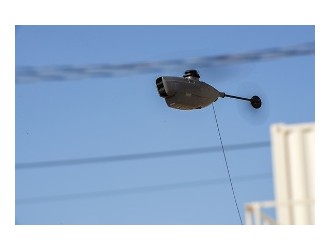
The same U.S. military think tank responsible for the initial development of the internet is now turning its sights to the skies as it researches ways to track drones.
On Sept. 13, DARPA, or the Defense Advanced Research Projects Agency, published a request for proposals from tech firms capable of developing an “Aerial Dragnet” program to conduct “persistent, wide-area surveillance of small unmanned aerial systems (UASs) in urban terrain on a city-wide scale.”
In other words, DARPA wants to equip the military with a system which would allow it to track every drone in an urban area, especially in combat zones.
Kelsey D. Atherton, a defense technology writer at Popular Science, noted on Sept. 13 that DARPA hopes to overcome a major limitation in current systems for tracking aircraft:
“There is no good way to track the drones in the sky. Passenger airplanes and helicopters report their flights to air traffic control, and even if they didn’t, the vehicles are large and show up easily on radar, making it possible to keep an eye on them over land. Drones, especially commercial or hobbyist drones, are small enough to appear like birds on radar.”
Currently, tracking drones is mostly done visually, which has obvious limitations. Andrew Dalton, writing on Sept. 15 for Engadget, explained that the “Aerial Dragnet” program would likely use its own drones to track others. Dalton wrote:
“DARPA’s plan would include a network of surveillance nodes that can track slow, low-flying drones without the need for a direct line of sight. Those nodes could be anything from a fixed instrument to a tethered or ‘long endurance’ drone and the whole thing is meant to be cost-effective and highly scalable for larger coverage areas.”

While technology developed by DARPA is always destined for military use first, those innovations frequently find their way into civilian markets, too. Perhaps the best example of this transition is ARPANET, the computer networking system developed by DARPA in the 1960s which later expanded to become the modern internet.
“While Aerial Dragnet’s focus is on protecting military troops operating in urban settings overseas, the system could ultimately find civilian application to help protect U.S. metropolitan areas from UAS-enabled terrorist threats,” noted a press release on DARPA’s website.
The Federal Aviation Administration, in collaboration with NASA, is also working to develop a “drone-traffic control system,” Atherton reported in April, even collaborating with Google’s parent company, Alphabet, and Chipotle, the taco and burrito chain, during testing.
The FAA’s system appears to be geared primarily toward keeping civilian drones away from sensitive or dangerous areas, like airports, and ensuring a smooth flow of aerial traffic as commercial drone use becomes commonplace. As Dalton notes, however, “DARPA envisions a system that can be used by the military in urban settings overseas or for homeland security applications in the US.”
The announcement of this DARPA project is another sign that warfare is becoming increasingly high-tech in the 21st century, with U.S. troops preparing themselves for future combat against adversaries with access to a similar level of advanced weaponry as the U.S. military itself. The Red Flag military exercises, one of the largest and most important training exercises carried out annually, concluded last month in the Nevada desert, and this year’s exercises featured preparation for large-scale space and cyber warfare.





